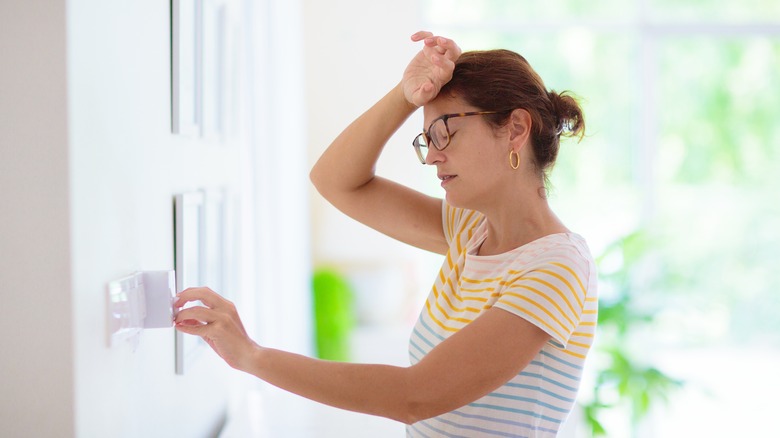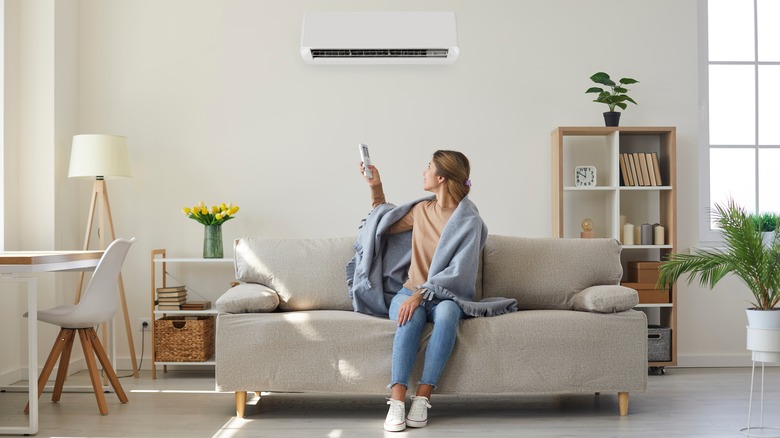Knowing The Ideal Thermostat Settings For Each Season Could Help You Save Money
As the seasons change, so does your energy bill. This is why you need to know the best thermostat settings for each season, from when you're home to when you're out and about for the day. By focusing on these ideal temperatures, you can work to keep your energy bills consistent all year long. But more than that, finding the sweet spot on your thermostat can lead to improved sleep. However, it's not a one-size-fits-all with your thermostat, and the best setting for summer won't necessarily be the best temperature for winter. Instead, you need to focus on the ideal economical thermostat settings for comfort.
According to Energy.gov, you can save upwards of 10% just by cutting your thermostat back for 8 hours every day. This means that a 7 to 10-degree reduction can save you big bucks. If you think you'll forget to adjust your thermostat before leaving for work, consider a programmable option. This way you can set it and forget it. But what's the ideal thermostat temp for your home? Let's take it one season at a time.
Spring and summer
During the spring, you should set your thermostat to 68 degrees during the day when you're home. However, you need to remember to lower it when you're away from the house. Although it's tempting to turn it off, this means your thermostat has to work harder to get your house back to its ideal economical temperature when you turn it back on. Instead, lower your thermostat to 60 degrees when you're out of the house. Aim for these temperatures on colder days. On warmed days when the sun is doing its job, you can raise your thermostat. Keep it set to 78 degrees when you're home and awake and doing things around the house. When you head out for a little while, raise it to 86 degrees.
During summer, you'll need to adjust the temperature you keep your thermostat at. While 86 degrees seems like the best thermostat setting when you're out during the spring, you may find your house is uncomfortably warm upon returning on a hot summer day. If you have pets in your home, you'll want to keep your house at a comfortable temperature when you're away. Consider how thick your pet's fur is, but aim for 75 to 78 degrees to keep them comfortable. If you don't have pets, 78 degrees is still an ideal temperature to keep your house at. Since summer energy bills are $176 on average, you could save $17.6 monthly.
Fall and winter
If you're home on a blustery fall day (but keeping busy around the house), you should strive to keep your thermostat set to 68 degrees. If you find yourself getting a little cool, you can always wear layers to avoid raising your thermostat. Keep in mind that if you have babies or children in the home, you should aim to keep your thermostat between 68 and 72 degrees (depending on their needs; always speak to your pediatrician).
For children and babies, don't let your thermostat drop below 65 degrees in the winter. You can add layers to help keep your child comfortable in the winter (while putting them in airy summer clothing during the warm months). Avoid rooms that are excessively warm or cold and always check in with the temperature before putting your little one to bed. Overheated areas can lead to an increase in sudden infant death syndrome (SIDS). You can work to prevent this with a dehumidifier or fan. Always consider who's in your home before setting any smart thermostats, but keeping an eye on temperatures within your home can turn a $150 monthly winter energy bill into $135.


